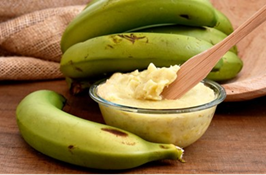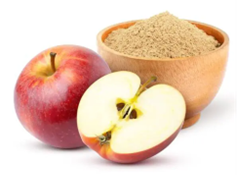Developing and Evaluating New Upcycled Food Products
Miss SHAHID UBEAD Maahin, CAM Alumni, Faculty of Management and Hospitality
Dr LEUNG Tsui Yan Vicky, Lecturer, Faculty of Management and Hospitality
The agriculture and food (agro-food) industry constantly develops and produces large volume of food by-products - secondary products derived from the early stages of agriculture-based food production - which could be highly nutritional and functional. For example, apple pomace is the processed waste (i.e., peel, core, seeds, stem and soft tissues) of the fruit that is generated from making apple juice (Kennedy et al., 2019). In recent years, there has been a growth in demand for added-value and nutrient-rich foods, prompting new product development within the industry. Upcycled food products are one of these new developments, where by-products are used as ingredients to develop new forms of foods. The gastronomic industry has shown diverse usage of food by-products in the form of emulsifiers and flavour enhancers to preservatives.
With a keen interest in understanding the properties of food by-products and applying them to dishes, Miss Shahid Ubead Maahin, BA(Hons) Culinary Arts and Management student, investigated upcycled food products in her final year project (supervised by Dr Leung Tsui Yan, Vicky). The project explored consumers’ sensorial satisfaction (appearance, odour, flavour, taste, and texture) of three newly developed upcycled foods made with agro-food by-products. The by-products explored were green banana biomass - a product from banana processing obtained by cooking green bananas (Auriema et al., 2021); apple pomace, as defined earlier, is the by-product of making apple juice; and artichoke blanching waters - the product obtained from boiling the inedible parts of the plant e.g., leaves, external bracts and stems (Cassano et al., 2015) (see Figures 1-3).
|
Figure 1. Green banana biomass |
Figure 2. Apple pomace |
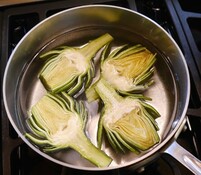
Figure 3. Artichoke blanching waters
The three newly developed upcycled foods were: (1) corn chowder with green banana biomass (Figure 4), (2) chocolate chip cookies with apple pomace (Figure 5), and (3) preserved peaches with artichoke blanching waters (Figure 6).
A survey was conducted to understand the consumers’ views towards these little-known by-products. Miss Shahid Ubead developed the recipes for the study by learning about the nutritional content of these by-products, and created new formulations for the new upcycled food products. A consumer sensory analysis was then carried out, where participants were given a sample of each of the new food products to taste and evaluate. Due to the COVID-19 pandemic, data collection proved difficult as the team could not physically contact their participants. To overcome this hurdle, the team used the “Home Use Test (HUT)” sensory testing kits comprising food samples, the necessary tools, and a QR code to scan and complete the sensory analysis.
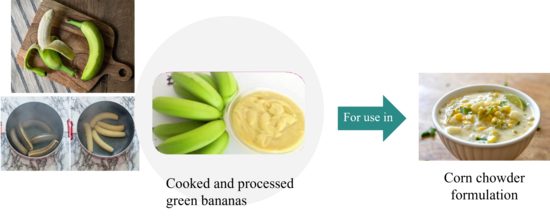
Figure 4. Corn chowder with green banana biomass
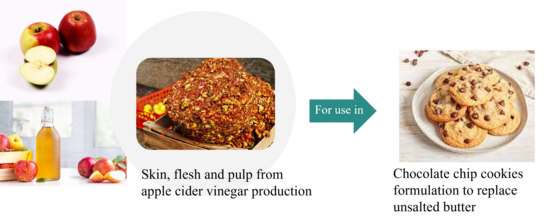
Figure 5. Chocolate chip cookies with apple pomace
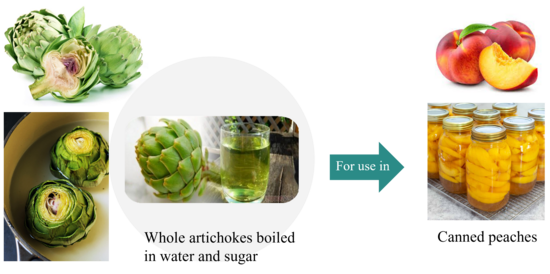
Figure 6. Preserved peaches with artichoke blanching waters
The study showed how different age groups perceived upcycled agro-food by-products differently. Upcycled food products tended to be most popular among "Generation Y" or "Millennial" consumers (ie. people born between 1982 and 1994). There is a potentially large market of consumers of this age who would purchase upcycled food products. The sensory analysis revealed that the participants found the corn chowder and chocolate chip cookies acceptable, whereas the preserved peaches with artichoke blanching waters was not.
Only 15% of the participants were aware of food upcycling and/or food by-products, implying that raising public awareness and educating consumers about food upcycling and food by-products could help reduce food waste. The project's results point to further innovative research opportunities for other THEi students.
Acknowledgement: This research is fully supported by a grant from the Research Grants Council of the Hong Kong Special Administrative Region, China (Project Ref. No.: UGC/IDS(R)25/20).
References:
- Auriema, B. E., Corrêa, F. J., B., de Toledo Guimarães, J., Thaís dos Santos Soares, P., Rosenthal, A., Zonta, E., Rosa, R., C., C., Luchese, R. H., Esmerino, E. A., and Mathias, S. P. (2021) “Green banana biomass: Physicochemical and functional properties and its potential as a fat replacer in a chicken mortadella”. LWT, 140.
- Cassano, A., Conidi, C., Ruby Figueroa, R., and Castro Muñoz, R. (2015) “A Two-Step Nanofiltration Process for the Production of Phenolic-Rich Fractions from Artichoke Aqueous Extracts”. International Journal of Molecular Sciences, 16 (12), 8968–8987.
- Kennedy, M., List, D., Lu, Y., Foo, L. Y., Newman, R. H., Sims, I. M., Bain, P. J. S., Hamilton, B., and Fenton, G. (2019) “Apple Pomace and Products Derived from Apple Pomace: Uses, Composition and Analysis”. In: Linskens, H.F., Jackson, J.F. (eds) Analysis of Plant Waste Materials. Modern Methods of Plant Analysis, vol 20. Springer, Berlin, Heidelberg.

